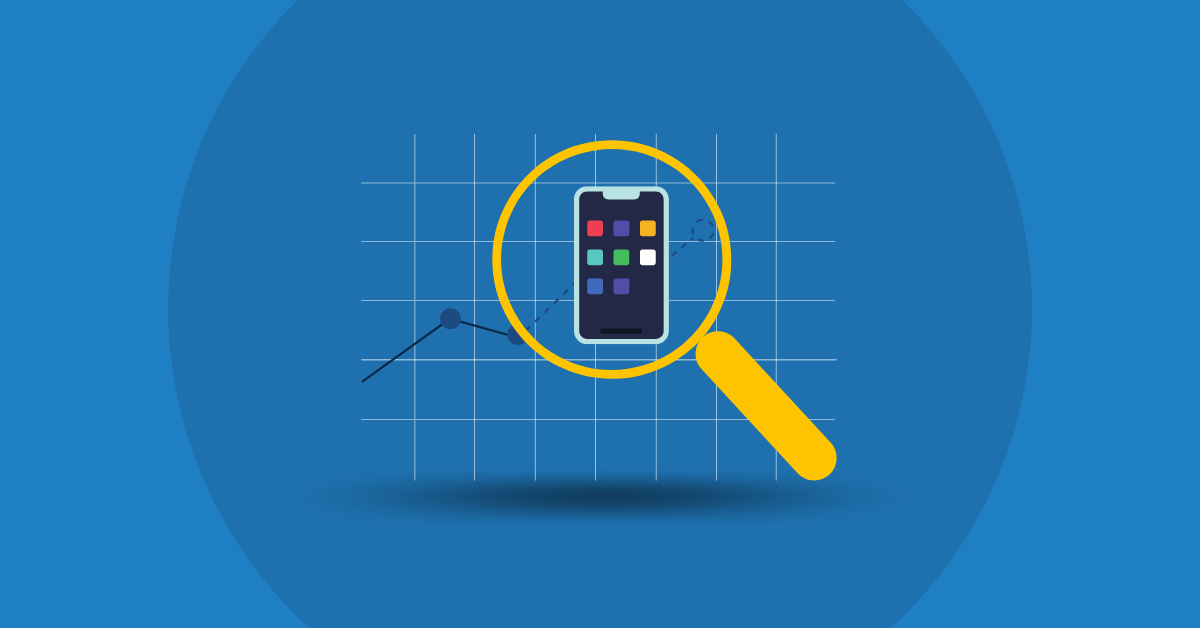
The year is rounding the last bend, leaving businesses to gear up for what’s next. Preparing for the future requires looking to the past. From there, companies can judge their current state to make accurate predictions.
Mobile app security continues to be a significant concern for businesses, especially as consumers rely on apps for more essential tasks. So, what’s to come in 2024? Below are a few predictions on the state of mobile security, along with tips on how businesses can fortify apps to protect vital data.
People spend 4-5 hours daily using mobile apps. Consumers store personal information on all types of apps, from banking to social media to eCommerce, and companies must know how to protect it.
The sheer amount of time users spend on mobile apps means any institution with mobile services needs a customer-first mindset. Below are a few significant mobile security trends evident from the past year’s events.
✅ Biometric Authentication Advancements
In 2023, 49% of data breaches involved using stolen credentials. However, many major companies aren’t just idly standing by.
While Norton suffered massive breaches due to weak password management, other tech leaders, like Apple, are the standard bearers for advancing biometric authentication. For example, Apple is updating its biometric approach, eliminating touch ID and replacing it with face ID, which is less error-prone.
✅ Enhanced App Shielding and Code Obfuscation
Unprotected code persists as a security hazard. But there’s an increased focus on app shielding and code obfuscation techniques.
Companies can protect against reverse engineering and tampering through encryption and obfuscation efforts. For this reason, many companies flocked to app shielding tools, making it harder for attackers to analyze and manipulate code for reverse engineering.
✅ Zero-Trust Architecture Implementation
The past year saw a wider adoption of zero-trust architecture, emphasizing continuous verification and strict access controls. For example, Google’s BeyondCorp model set a strategic vision for zero-trust, laying out a clear philosophy of why no device is to be trusted inherently. Overall, this reduces the risk of unauthorized access to sensitive data.
Based on analysis from 2023, there will be many things businesses can expect in 2024.
AI was the dominant theme of 2023. Expect nothing to be different in 2024.
As the AI footprint grows, companies must understand how it’s used for malicious attacks and defense strategies.
Throughout the past year, AI-powered malware exploited vulnerabilities in mobile applications using machine learning algorithms to track user behavior and craft attacks like code injections or personalized phishing campaigns.
However, new AI defense tools harness modern tech to automate defense, analyze suspicious activity, and issue automated security patches to weak code before hackers recognize the weak entry point.
About 78% of companies rely on third-party tools for critical services, including mobile apps.
In 2023, we saw attackers abuse vulnerabilities in the development, build, and distribution processes. And the software supply chain has become a prime target for cybercriminals. For example, the SolarWinds supply chain attack demonstrated how attackers infiltrated trusted software vendors to compromise their downstream clients.
In 2024, similar threats will emerge in the mobile app ecosystem. For example, the discovery of malicious packages in the Node Package Manager ecosystem, such as the event-stream incident, showcased how attackers can compromise the software supply chain by injecting malicious code into widely used packages.
The number of phishing scams broke records in 2023. Companies must learn to protect themselves from evolving attacks in the coming year.
Mobile apps present a uniquely enticing environment for phishing scams. Attackers often use fake app notifications, SMS, or email messages to trick users into revealing login credentials or personal information. Now, with AI and machines becoming more complex, hackers will find more success in creating deep fakes to scam customers out of credentials.
Eighty-two percent of Americans now use virtual payment methods to make in-app purchases. Cybercriminals increasingly target in-app purchases and financial transactions within mobile apps, exploiting payment processing and transaction security weaknesses.
Having a complicated cluster of security tools to defend your organization piece by piece no longer works. Businesses must be agile, which means consolidating security tools.
Right now, businesses average 76 different cybersecurity tools. Each one requires platform management, reporting, and audits.
The number is unmanageable, but businesses are catching on to more comprehensive tools that create a mesh architecture. Studies show that companies can save up to 90% on security incidents by adopting a more holistic approach. So, come 2024, you can expect the future-forward organizations to cut down on the number of security tools.
Now you know what to expect. But how should companies be thinking heading into 2024?
The best thing we can do to defend against mobile app attacks is to forge a proactive approach to security that analyzes, monitors, and automates security practices.
In practice, this means awareness of trends and tools that will aid security teams in 2024.
Businesses must establish clear and robust security policies.
Every sound business needs a sound security policy. These policies are crucial to establishing a company-wide security consciousness, where all stakeholders understand how to limit vulnerabilities and diminish the ever-present reality of digital attacks.
However, tool selection is one of the keys to laying out and following a security policy. One indispensable tool is a code obfuscator, but it can’t be cumbersome, and it must be able to plug seamlessly into existing infrastructure.
Our obfuscation tools such as Dotfuscator and DashO are among the most thorough and respected solutions for ensuring your source code isn’t left vulnerable to exploitation. If you want to see how our products can make your code secure, give them a test drive with a 14-day free trial.